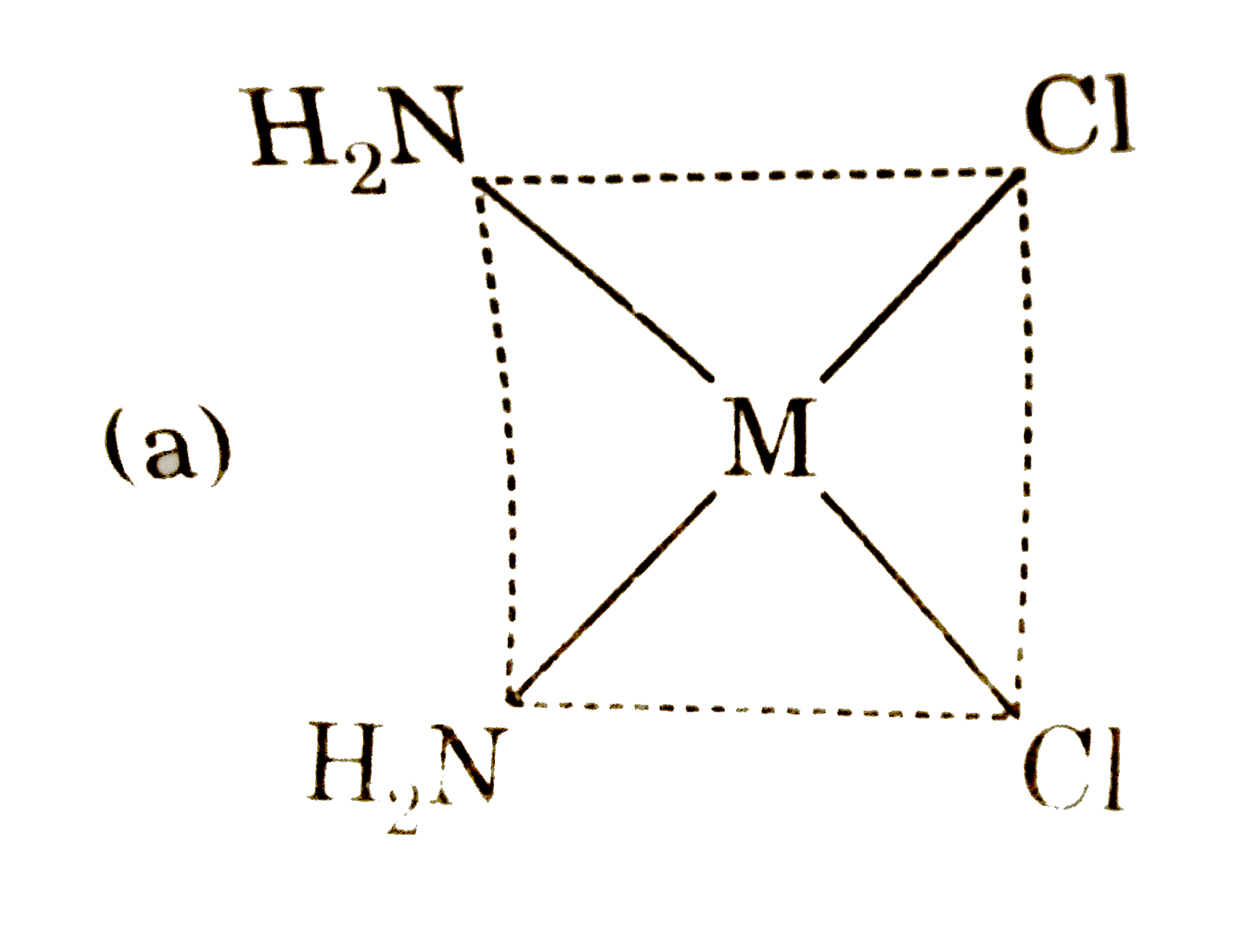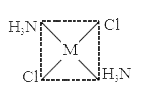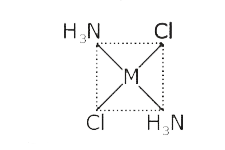Which of the following isomers of [M(NH3)2Cl2] would react with silver oxalate (Ag2C2O4) ?


Both (a) and (b)
None of these
The correct Answer is:A
To determine which isomer of the coordination compound (M(NH3)2Cl2) would react with silver oxalate (Ag2C2O4), we need to analyze the isomers and their potential interactions with the bidentate ligand (oxalate).
1. Identify the Isomers:
The compound (M(NH3)2Cl2) can exist in two geometric isomers:
- Cis isomer: where the two ammonia ligands are adjacent to each other.
- Trans isomer: where the two ammonia ligands are opposite each other.
2. Understand the Ligand Types:
- Ammonia (NH3) is a monodentate ligand, meaning it can coordinate to the metal at only one site.
- Oxalate (C2O2−4) is a bidentate ligand, meaning it can coordinate to the metal at two sites.
3. Reaction with Bidentate Ligands:
- For a bidentate ligand like oxalate to coordinate with the metal center, there must be two available coordination sites that are adjacent to each other.
- In the case of the cis isomer, the two ammonia ligands are adjacent, allowing the oxalate to effectively coordinate with the metal center.
4. Conclusion:
- The cis isomer of (M(NH3)2Cl2) will react with silver oxalate (Ag2C2O4) because it has the necessary adjacent coordination sites for the bidentate ligand to bind.
- The trans isomer will not react because the two ammonia ligands are positioned opposite each other, leaving no adjacent sites for the oxalate to bind.
Final Answer:
The cis isomer of (M(NH3)2Cl2) would react with silver oxalate (Ag2C2O4).
---
The compound (M(NH3)2Cl2) can exist in two geometric isomers:
- Cis isomer: where the two ammonia ligands are adjacent to each other.
- Trans isomer: where the two ammonia ligands are opposite each other.
- Ammonia (NH3) is a monodentate ligand, meaning it can coordinate to the metal at only one site.
- Oxalate (C2O2−4) is a bidentate ligand, meaning it can coordinate to the metal at two sites.
- For a bidentate ligand like oxalate to coordinate with the metal center, there must be two available coordination sites that are adjacent to each other.
- In the case of the cis isomer, the two ammonia ligands are adjacent, allowing the oxalate to effectively coordinate with the metal center.
- The cis isomer of (M(NH3)2Cl2) will react with silver oxalate (Ag2C2O4) because it has the necessary adjacent coordination sites for the bidentate ligand to bind.
- The trans isomer will not react because the two ammonia ligands are positioned opposite each other, leaving no adjacent sites for the oxalate to bind.
The cis isomer of (M(NH3)2Cl2) would react with silver oxalate (Ag2C2O4).
Topper's Solved these Questions
- BOOK - GRB PUBLICATIONCHAPTER - COORDINATION COMPOUNDSEXERCISE - G. Organometallic Compounds, Synergic Bonding52videos
COORDINATION COMPOUNDS
- BOOK - GRB PUBLICATIONCHAPTER - COORDINATION COMPOUNDSEXERCISE - REASONING TYPE59videos
COORDINATION COMPOUNDS
- BOOK - GRB PUBLICATIONCHAPTER - COORDINATION COMPOUNDSEXERCISE - E. Stability, Colour and Magnetic Properties of Complexes60videos
COORDINATION COMPOUNDS
- BOOK - GRB PUBLICATIONCHAPTER - CHEMICAL KINETICSEXERCISE - Subjective Type63videos
CHEMICAL KINETICS
- BOOK - GRB PUBLICATIONCHAPTER - D-BLOCK ELEMENTSEXERCISE - Subjective Type18videos
D-BLOCK ELEMENTS
Similar Questions
Knowledge Check
- Question 1 - Select One
Which of following isomers of [M(NH3)2Cl2] would react with silver oxalate (Ag2C2O4) :-
A B
B CBothDNone
CBothDNone - Question 2 - Select One
Which of the following isomers of [M(NH3)2Cl2] would react with potassium oxalate (K2C2O4):
A B
B CBothDNone
CBothDNone - Question 3 - Select One
The number of geometrical isomers for [P(NH3)2Cl2] is
A2B1C3D4
Draw the geometrical isomers of complex [Pt(NH3)2Cl2].
View SolutionWrite all the isomers of [Co(NH3)6][Cr(C2O4)3].
View SolutionName the type of isomerism exhibited by the following isomers :
[Pt(NH3)4][PtCl6] and [Pt(NH3)4Cl2][PtCl4]View SolutionWhich of the following product is are obtained when Cl2O reacts with NH3?
View SolutionConsider the following isomers.
(i) [Pt(NH3)4Cl2]Br2 (ii)[Pt(NH3)4Br2]Cl2
(iii) [Co(NH3)4Cl2]NO2
Which of the following observations is correct ?View Solution

